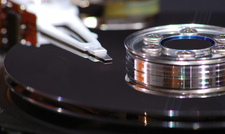Simplifying data backup on Android devices
Backup Assistant

© Photo by Jandira Sonnendeck on Unsplash
Linux Android Backup offers an open source solution to backing up the most important content from your Android devices in just a few steps.
Backing up data from a Linux installation doesn't pose a problem for most users thanks to open source solutions for almost every scenario, from a single machine to a cluster, as well as command line and GUI options. However, backing up Android devices such as smartphones or tablets can be a little trickier. Up until Android 4, backing up such devices was only possible if the bootloader was unlocked, and unlocking was no easy task because most manufacturers tried to prevent it. And if you did unlock the bootloader, you could void your warranty, and, even worse, risk bricking your device. An advance backup would have made sense, but it was only possible after rooting.
Starting with Android 4, adb backup [1] (which Google has since deprecated for security reasons) worked reliably without rooting, even between devices by different manufacturers, which differed from many other manufacturer tools or third-party apps. Today, the only official tool left for backups is Android Debug Bridge (ADB), which lets you control Android devices using a computer with Linux, macOS, or Windows. However, using ADB requires many manual steps and still comes with the risk of bricking the device.
Linux Android Backup (LAB), a fledgling project developed on GitHub, offers an alternative to ADB [2]. Under the hood, LAB, which consists of a small shell script and a Flutter app, greatly simplifies backing up Android devices. LAB works entirely without vendor lock-in or closed source software that could compromise your data. While the script is based on ADB, it does not use the deprecated adb backup command. Despite its name, LAB also works on macOS and Windows, in the Windows Subsystem for Linux (WSL) [3]. In fact, the developers are currently looking for a more suitable name.
[...]
Buy this article as PDF
(incl. VAT)
Buy Linux Magazine
Subscribe to our Linux Newsletters
Find Linux and Open Source Jobs
Subscribe to our ADMIN Newsletters
Support Our Work
Linux Magazine content is made possible with support from readers like you. Please consider contributing when you’ve found an article to be beneficial.

News
-
Zorin OS 18 Hits over a Million Downloads
If you doubt Linux isn't gaining popularity, you only have to look at Zorin OS's download numbers.
-
TUXEDO Computers Scraps Snapdragon X1E-Based Laptop
Due to issues with a Snapdragon CPU, TUXEDO Computers has cancelled its plans to release a laptop based on this elite hardware.
-
Debian Unleashes Debian Libre Live
Debian Libre Live keeps your machine free of proprietary software.
-
Valve Announces Pending Release of Steam Machine
Shout it to the heavens: Steam Machine, powered by Linux, is set to arrive in 2026.
-
Happy Birthday, ADMIN Magazine!
ADMIN is celebrating its 15th anniversary with issue #90.
-
Another Linux Malware Discovered
Russian hackers use Hyper-V to hide malware within Linux virtual machines.
-
TUXEDO Computers Announces a New InfinityBook
TUXEDO Computers is at it again with a new InfinityBook that will meet your professional and gaming needs.
-
SUSE Dives into the Agentic AI Pool
SUSE becomes the first open source company to adopt agentic AI with SUSE Enterprise Linux 16.
-
Linux Now Runs Most Windows Games
The latest data shows that nearly 90 percent of Windows games can be played on Linux.
-
Fedora 43 Has Finally Landed
The Fedora Linux developers have announced their latest release, Fedora 43.

